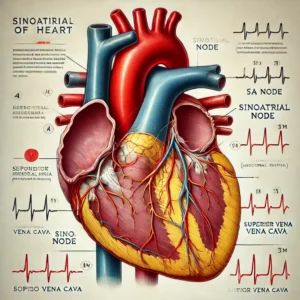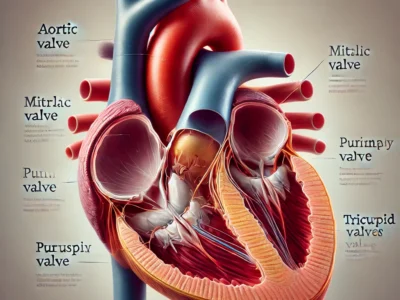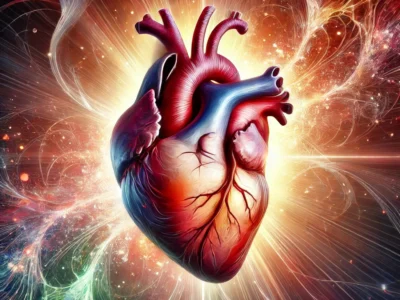Sinoatrial node
 The Sinoatrial Node: The Heart’s Natural Pacemaker
The Sinoatrial Node: The Heart’s Natural Pacemaker
When we think about what keeps our heart beating, the term sinoatrial node (SA node) might not immediately come to mind. However, this small, specialized group of cells located in the heart plays a pivotal role in maintaining the rhythm that sustains life. Known as the heart’s natural pacemaker, the SA node ensures your heartbeat stays consistent and responsive to the demands of your body.
What Is the Sinoatrial Node?
The sinoatrial node is a cluster of specialized cardiac cells found in the right atrium of the heart, near the opening of the superior vena cava. These cells are unique because they can generate electrical impulses without any external stimuli, a property known as automaticity. This ability makes the SA node the primary driver of your heart’s rhythm.
How the SA Node Works
The SA node generates and regulates electrical impulses that set the heart rate:
- Impulse Generation:
The cells in the SA node spontaneously produce electrical signals at a regular interval, typically 60-100 beats per minute in a healthy adult at rest. - Signal Transmission:
The electrical impulses spread through the walls of the atria, causing them to contract and push blood into the ventricles. - Relay to the AV Node:
After the atria contract, the signal is relayed to the atrioventricular (AV) node, which passes it to the ventricles, ensuring a coordinated heartbeat.
Why Is the SA Node Called the Pacemaker?
While other parts of the heart’s electrical system can also generate impulses, the SA node dominates because it produces signals at the fastest rate. If the SA node fails, other areas, like the AV node or ventricular tissue, can take over, but they usually produce slower and less efficient rhythms.
Factors That Influence the SA Node
The SA node adjusts the heart rate based on the body’s needs. This regulation is influenced by:
- Autonomic Nervous System:
- Sympathetic Nervous System: Increases the firing rate of the SA node, raising the heart rate during stress, exercise, or excitement.
- Parasympathetic Nervous System (via the vagus nerve): Slows the SA node activity, decreasing the heart rate during rest or relaxation.
- Hormones:
- Hormones like adrenaline and thyroid hormones can speed up the SA node’s activity.
- Electrolytes:
- Proper levels of potassium, calcium, and sodium are essential for the SA node to function optimally.
- Age:
- The firing rate of the SA node tends to slow down with age, which can affect heart rate.
Disorders of the SA Node
Dysfunction of the SA node can disrupt the heart’s rhythm, leading to conditions like:
- Sinus Bradycardia:
- A slower-than-normal heart rate caused by reduced SA node activity.
- Common in athletes but can also occur due to aging, medications, or heart disease.
- Sinus Tachycardia:
- An abnormally fast heart rate resulting from overstimulation of the SA node due to stress, fever, or medical conditions.
- Sick Sinus Syndrome (SSS):
- A group of conditions where the SA node malfunctions, leading to erratic heart rhythms (too slow, too fast, or both).
- Often requires treatment with a pacemaker.
- Heart Block:
- If the SA node fails to communicate effectively with the rest of the heart, the normal rhythm may be disrupted.
Diagnosing SA Node Issues
Doctors can evaluate the function of the SA node using:
- Electrocardiogram (ECG): Measures the electrical activity of the heart.
- Holter Monitoring: Tracks heart rhythms over 24-48 hours.
- Electrophysiological Studies (EPS): Provides detailed mapping of the heart’s electrical pathways.
Keeping Your SA Node Healthy
To maintain a healthy SA node and overall heart function:
- Exercise Regularly:
Aerobic activities strengthen the heart and improve its efficiency. - Eat a Heart-Healthy Diet:
Include plenty of fruits, vegetables, whole grains, and lean proteins to support cardiovascular health. - Manage Stress:
Chronic stress can overstimulate the SA node, leading to rhythm issues. - Avoid Smoking and Excessive Alcohol:
Both can damage the heart’s electrical system over time. - Monitor Your Health:
Regular check-ups can detect issues like high blood pressure or electrolyte imbalances that may affect the SA node.
Conclusion
The sinoatrial node might be small, but it is one of the most important structures in the heart. Its role as the heart’s natural pacemaker ensures that our hearts beat efficiently and adaptively throughout our lives. By understanding the SA node’s function and caring for our heart health, we can keep this vital mechanism performing at its best.
Your heart is in rhythm—take steps to keep it that way!
https://zireemilsoude.net/4/8595583
https://www.profitablecpmrate.com/u52jhwjgr?key=967b290a9b0ec20908866d24dc3c66f9



